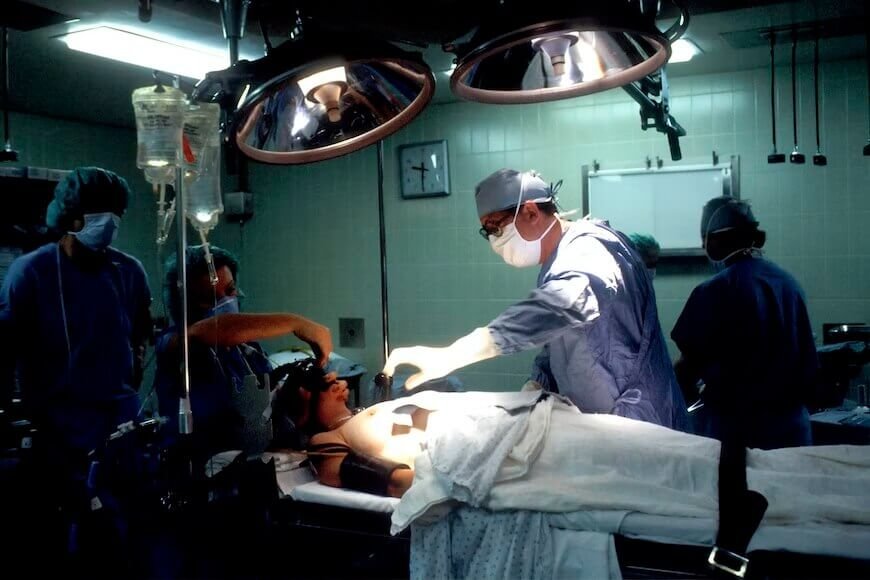Facelift surgery is a cosmetic procedure to give your face a youthful appearance. It’s also known as rhytidectomy. This procedure reduces the instances of skin sagging and helps reduce skin wrinkles in your cheeks or jaw line.
During this procedure, a skin flap is pulled back from both sides of your face. Excess skin is then removed, and all tissues underneath your skin are modified. This gives your face a younger appearance.
Types of Facelifts
Many types of facelift surgeries are available depending on the areas of your face or neck that you need to work on. Common facelift procedures include:
- Traditional facelifts: This procedure entails creating incisions around the hairlines and below the ears and chin. A surgeon will tighten the muscles and other supporting structures of your face and neck after separating your skin from the underlying tissues. If required, the surgeon trims away any extra fat from your neck and jowls. After that, the surgeon will remove any excess skin and reposition the skin over your face naturally. This surgery is recommended for those who want to reverse mild to significant facial aging.
- A SMAS facelift: This procedure targets the superficial musculoaponeurotic system in the lower two-thirds of your face (the muscular layer). Your muscles, extra skin, and fat are tightened during this procedure. This surgery is an alternative to traditional facelifts.
- Deep plane facelift: The surgeon raises the SMAS (facial muscles), fat, and skin together during a deep plane facelift. This type of facelift works on different parts of your face simultaneously.
- Mid-facelift: This type of surgery works on the cheek area of your face. A surgeon repositions your cheeks’ fat and tightens the skin around them.
- Mini-facelifts: These procedures lift the lower neck and face. It is not as invasive as conventional facelift treatments. Surgeons often recommend this procedure for younger patients with minimal facial sagging.
- Cutaneous (skin) facelifts: These operations only work on the skin and usually target the neck and lower face.
Steps of the Facelift Procedure
For the facelift surgery to be effective, there are various steps you have to undergo. They include:
Anesthesia
During the surgical procedure, you will receive medication for comfort and ease. There are various options, such as general anesthesia and intravenous sedation. Your cosmetic surgeon should advise you on the option that best suits your needs.
Several additional procedures can further improve the results of a facelift. They consist of the following:
- Fat transfer or facial implants to improve the contour
- Using fillers or fat injections to reduce wrinkles
- Using resurfacing methods to enhance the texture and tone of facial skin
Incision
Depending on how much change you want to see, you can get a normal facelift, neck lift, or a restricted incision facelift.
A facelift incision usually starts at the hairline and runs around the ear to the lower scalp. It also repositions and sculpts underlying tissue, redistributes fat from the jowls, face, and neck, and lifts the muscles and deeper layers of skin on the face. It also eliminates and re-drapes extra skin from around the elevated features.
Closing the Incisions
Sutures used to seal wounds may dissolve or require removal after three to five days. Skin glue is often used to close the incisions. After the cosmetic surgeon heals the facelift incision lines, they blend nicely with the natural contours of your ears or hairline.
Frequently Asked Questions
At what age can one get a facelift?
People around 40, 50, or 60 years are often the best candidates for facelifts when the signs of aging become more visible. The best way to treat these signs of aging, such as wrinkles, sagging skin, and fine and deep lines, deep lines, is a surgical facelift instead of non-surgically.
How long does a facelift last?
The effects of a facelift are temporary because your skin will continue to age. Therefore the results should last about ten years for most patients.
How painful are facelifts?
There is usually no physical pain after a facelift, but the swelling may make your face feel heavier and scarred. The bandage you’ll wear on the first night, which the surgeon places below your chin, may also be uncomfortable.
How often do facelifts appear natural?
When performed well by an experienced cosmetic surgeon, facelift results can be among the most natural-looking of any cosmetic operation, giving you a more youthful facial appearance.
How much younger will I look after a facelift?
According to the American Society of Plastic Surgeons, patients who have had a facelift report looking 12 years younger than before the treatment.
How much does a facelift cost?
The price of a facelift varies according to the type of operation, facility, and cosmetic surgeon. The American Society of Plastic Surgeons estimates the cost of facelift surgery to be around $8,005. This cost excludes anesthesia, operating room equipment, and other related charges, which account for only a percentage of the total cost.

